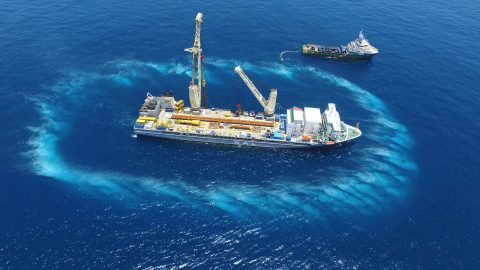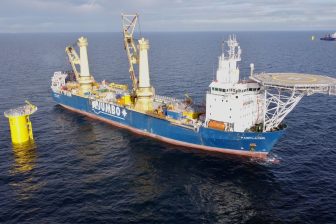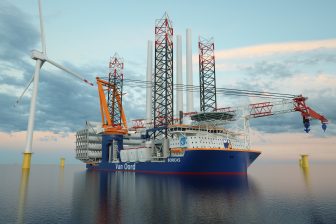
SAL Heavy Lift completes first piling project with new fly-jib
PRESS RELEASE – SAL Heavy Lift has recently completed its first offshore piling project using its newly installed fly-jib on the heavy-lift vessel Lone.
Together with the main contractor Per Aarsleff A/S, the German shipping company worked on Greater Changhua Test Pile Project in the waters off Taiwan.
The Greater Changhua Offshore Windfarm is an offshore wind site in the Taiwan Strait roughly 50 kilometres off the coast of Taiwan, which is being developed by Ørsted.
SAL was subcontracted for the provision of a DP2 installation vessel, the MV Lone, and to perform pile installation and testing work as part of the pre-piling phase of the project. As the soil of the seabed on the project site had to be ensured, a test foundation was installed on designated locations around the project site. In water depths of 35 to 40 metres, six piles with a length of up to 80m were hammered into the seabed through a special Pile Guide Frame.
Fly-Jib
To realize the project, a preparation phase was set in motion which turned into the largest mobilization of a vessel in the history of SAL. To be able to lift the long piles vertically, a jib extension to one of the cranes of MV Lone had to be designed, manufactured, installed and tested. This resulted in the Fly-Jib installation on Lone’s crane number 2, giving it up to 23 metres extra jib length.
The vessel had to be equipped with Temporary Living Quarters (TLQs) and additional lifeboats to be able to host up to 100 people that would be on board during the project execution. To operate as an offshore installation vessel with so many people on board, MV Lone also had to change its certification from cargo vessel to become a Special Purpose Ship (SPS).
Mobilization
The mobilization took place in Singapore during Spring 2019, where no less than 3 additional SAL vessels supplied the necessary project equipment from both Rotterdam, Shanghai and Esbjerg to the MV Lone. This included the Fly-Jib, the Pile Guide Frame and a special Load Beam as well as various purpose-built testing equipment, lifting- and handling equipment, the pile driving spread, survey equipment and the ROV spread. In the project port in Taichung, Taiwan six piles were collected, before locating the vessel to the offshore site.
During the first phase between May and July 2019, two sets of three piles, with a unit weight of up to 140t each, were installed through the Pile Guide Frame at target locations to their required depths.
After a standby period, the second phase taking place during August 2019, involved static and dynamic testing on selected piles on the seabed. These tests provided the engineers from Ørsted with the necessary data to optimize pile design for the planned wind farm.
At the end of the project phase, the installed piles had to be decommissioned from the seabed, making use of a special cutting tool and then lifted back onto the deck of MV Lone transporting them back to shore for recycling.



